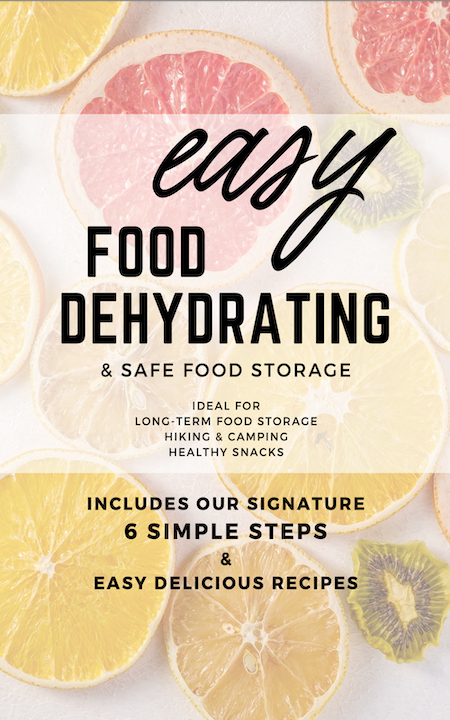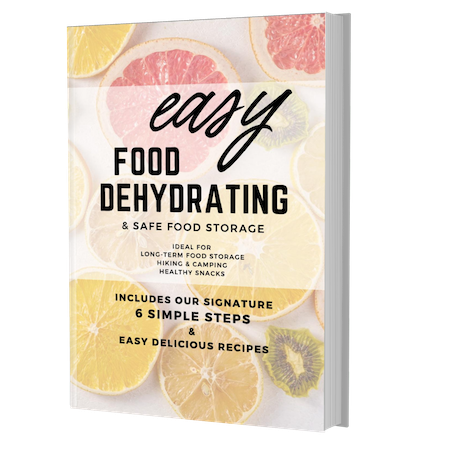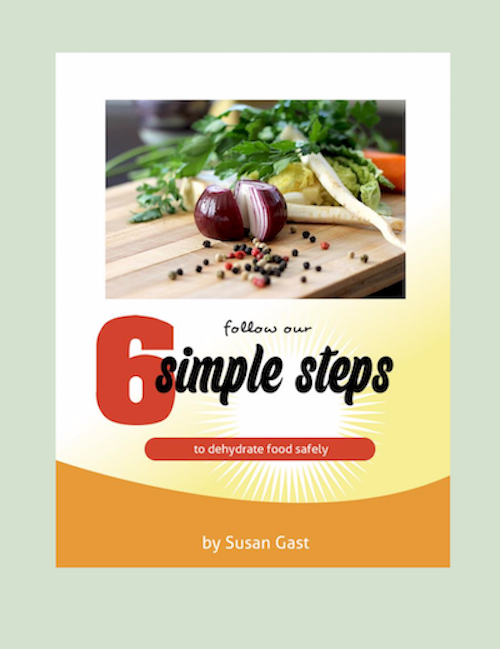- Home
- Food and Diet-Related Books
- Easy Food Dehydrating + Safe Food Storage
Easy Food Dehydrating and Safe Food Storage
If you’re looking to reduce food waste, stretch your grocery budget, or prepare for emergencies, learning how to dehydrate food is a smart solution.
And it’s easier than you think! In this guide, you’ll discover safe, step-by-step methods to dehydrate and store fruits and vegetables at home—plus get Susan’s best-selling book to take the guesswork out of it.
✅ Quick Answer: What is easy food dehydrating?
Easy food dehydrating means removing moisture from fruits and vegetables at home using a dehydrator, so they stay fresh longer. It's budget-friendly, reduces food waste, and—when stored properly—can last for months or even years.
Don’t let your produce spoil—dehydrate it! When foods are in season, take advantage of the buy one, get ones and sock them away. Check out the bountiful roadside stands, and visit your local farmers' markets too.
What You’ll Learn in This Book
You'll learn just how easy it is to dehydrate food in the comfort of your own home when you read Susan’s book called Easy Food Dehydrating and Safe Food Storage. The best thing? No more food waste!
The book also teaches you how to dehydrate the top 16 vegetables and
the top 14 fruits by using a Nesco or Excalibur food dehydrator. It’s
easy when you follow Susan’s Six Simple Steps.
How to Store Dehydrated Food Long-Term
When you’ve finished dehydrating your fruits and vegetables, Susan shows you how to safely store your food for long-term storage. Bins, buckets, Mason jars, and bags are the industry standards for safe storage.
After dehydrating, we need to get air-tight containers as listed above. Most often used are various-sized Mason jars for everyday use. For long-term storage, we use food vacuum-sealer bags and Mylar bags.
To keep your dehydrated foods fresh, you need to use oxygen absorbers. As their name implies, they absorb oxygen. This is important to keep mold at bay.
We place the oxygen absorbers inside the bag of food we've just dehydrated, and THEN we extract the air using a FoodSaver vacuum sealing machine.
Best Food Dehydrators to Use at Home
There are different brands of dehydrators, as you might expect. There are round and square ones - the Nesco brand has both types. Excalibur has square dehydrators. The advantage of going round is the ease of stackability.
You can
dehydrate as many trays as necessary, up to eight is recommended. We don’t
want to have a "leaning tower" of dehydrated food fall over! The minimum amount of trays to use for a Nesco (round) dehydrator is four. Notice I said minimum. This is to ensure proper air circulation.
The square Excalibur brand models offer 'pull-out trays' - like drawers. You can also omit the upper trays (leave a tray in—close to the bottom—and below that add a shallow tin-foil tray of water). It then becomes a handy bread-proofing machine!
Make Food Dehydrating Fun for the Whole Family
Get your kids involved. They’ll love the action and the sound of the food vacuum sealer. You can buy special bags—or rolls—to place your dehydrated food in. The rolls come in handy when you want to create “just the right size” bags.
Susan's book shares TOP DEHYDRATING TIPS and is available as an eBook or Paperback or AudioBook— Get your copy today!
Click on an individual image above to go buy it!
Popular Food Preservation Methods Compared
There are quite a few ways to preserve food and keep it shelf-stable for the long haul. Let’s take a quick look at the most popular ones:
- Drying or Dehydrating – This is my personal favorite! Removing the moisture from foods helps prevent mold and bacteria from growing. You can sun-dry things like grapes (hello, raisins!), but most folks these days use an electric dehydrator for fruit leathers, jerky, and more—just like I show you in my book.
- Refrigerating and Freezing – These are probably the most common methods we all use. Cooling things down slows spoilage, plain and simple. Freezing is great for long-term, while refrigerating gives us that short-term wiggle room before things go bad.
- Canning – Another well-loved method in home kitchens! Canning locks food up in sterilized glass jars using heat. High-acid foods like fruits and pickles can be canned in boiling water. But for low-acid veggies and meats, you’ll need a pressure canner to safely kill off any nasty microbes.
- Salting or Curing – This old-school method has stood the test of time. Salt pulls out moisture and creates an environment bacteria just can’t thrive in. It’s common for preserving things like fish, meats, and even some veggies.
- Jams and Jellies – These sweet spreads are preserved with lots of sugar and a touch of acid. That combo keeps the bad stuff out while giving you something delicious to enjoy on toast or pancakes!
So, yes—refrigeration is still the go-to for everyday storage, and freezing or canning works wonders for long-term prep. But once you realize how easy and effective dehydrating is (especially when paired with proper storage methods), it’s hard to go back.
That’s why I swear by my electric dehydrator. It’s a total time-saver—and honestly? Super satisfying to use.
Frequently Asked Questions About Food Dehydrating
What foods can I dehydrate at home?
What foods can I dehydrate at home?
You can dehydrate a wide variety of fruits and vegetables—like apples, bananas, carrots, and green beans. You can even make fruit leathers and jerky. My book includes the top 16 veggies and 14 fruits that are perfect for beginners!
What dehydrator should I get to start?
What dehydrator should I get to start?
I personally use both the Nesco (round stackable trays) and Excalibur (square, pull-out trays). If you're new, a Nesco is budget-friendly and easy to use. If you want more control and space, go with the Excalibur.
How long will dehydrated food last in storage?
How long will dehydrated food last in storage?
If sealed properly using vacuum sealer bags or jars with oxygen absorbers and desiccant packets, your dehydrated foods can last 1 to 5 years—sometimes longer. The key is airtight sealing and storing them in a cool, dry, dark place.
Whether you prefer reading, listening, or hands-on how-tos, Susan’s guide is ready to help you take control of your food storage journey. Dehydrating isn’t just practical—it’s fun, family-friendly, and fulfilling. Start preserving your pantry today!





















